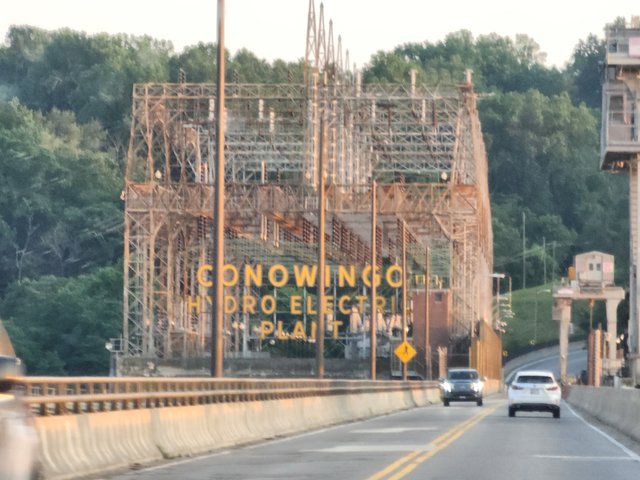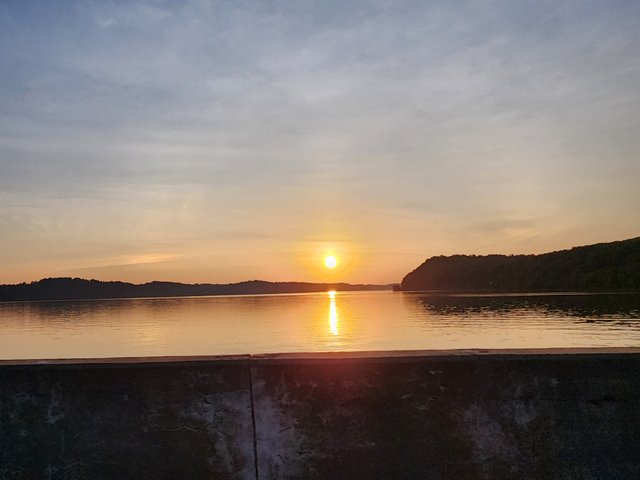My first birdwatching visit to the Conowingo Dam (and my first steem-atlas post)
Back in June, @lisa.palmer and I went to pick up @cmp2020 from the train station in Wilmington, Delaware, and on the way home we decided to take a bit of a detour.
I had recently learned about a Facebook group called the Conowingo Dam Eagles. Before then, I have driven past the Conowingo Dam any number of times, but it never occurred to me to stop there, and it really never occurred to me that it would be a good location for birdwatching. If you look at the photos in that Facebook group, however, you'll see that it actually seems to be an amazing spot for capturing photos of the American national bird, The Bald Eagle. I won't share any of their photos here due to copyright concerns, but click through and check them out. They are amazing.
I'd been watching their photos on Facebook for a few months, and I was curious what we'd see on a visit.
So, since we were driving south to Wilmington anyway, I thought it would be a good day for a short excursion to check out Maryland's Conowingo Dam. My goal for the day was really just to learn where to park, since I had never noticed any parking areas on the way by. I figured we'd plan a longer day trip in the future, once we learned our way around. With the help of the GPS, and after a couple of wrong turns, we found the parking lot for a picnic and fishing area next to the Susquehanna River, on the downstream side of the dam.
While we were there, we took some photographs, which I'll post here, and we also met a couple of people who go there, regularly, on photography excursions. From them, I learned a couple useful bits of information.
- The Bald Eagles generally come around between November and March. During the April-October part of the year, they migrate northwards.
- The reason it's so easy to find them on the downstream side of the dam is that fish get killed in the hydroelectric turbines, which makes mealtime for the birds a low-effort affair. (Later, I also learned that visitors may want to call for the generation schedule, since generator activity also signals higher activity for the birds. The number to call for the generation schedule is 1 (888) 457-4076, and apparently it plays a recorded loop containing the schedule.)
Because of #1, there were no Eagles present during our visit, but I'm planning to go back in November or December (maybe after purchasing a higher-zoom camera).
On the trip home, we randomly stopped for dinner at the Tidewater Grille in Havre De Grace, Maryland. I have already forgotten what we ate, but I'll say that we enjoyed the food and the atmosphere.
So, with that introduction out of the way, here are my photos. I am not much of a photographer, and my 40x zoom is clearly insufficient for the location, but hopefully they can give you an idea about what to expect.
Here is the sign you see when driving across the dam (from the Pennsylvania/Delaware direction) on the way to the parking area
Apparently, utility towers make a convenient between-meal resting place
There's a near-constant opportunity to photograph birds in flight. I have no idea what type of birds these are, though.
It's also easy to find wading birds like herons or egrets standing in the water, too
The parking lot is situated across from a small island in the river. To give you an idea of distance, those towers are the same ones with the resting birds up above.
Here are a couple views of the downstream side of the dam
Another bird perched on the island. Maybe a vulture?
There were other birds perched in some trees on the island
And photos in flight to close it out
Obligatory sunset photo, after which we discovered the Tidewater Grille
One last thing in closing
A principle of free market environmentalism is "if it pays, it stays". The idea is that humans will protect animals if there is a financial motivation.
With that principle in mind, I have long thought that - with the right combination of investment and motivation - Steem could be an amazing and financially self-sustaining conservation tool. This could be done by cultivating communities that photograph endangered animals, in similar fashion to what the Conowingo Dam Eagles do (for free) on Facebook, and even through the use of gamification.
What sorts of conservation communities can you imagine for the Steem blockchain?
I hope you enjoyed my first post from the Steem Atlas web site.


At least this would encourage people to come up with creative ideas to protect the environment with some benefit to themselves.
0.00 SBD,
0.19 STEEM,
0.19 SP
Right. Maybe this approach can't solve all environmental problems, but it solves some.
A good example is the American Bison. The species has seen a strong self-sustaining recovery ever since it became legal to farm them and sell the meat. Another common funding source is tourism.
IMO, creative environmentalists could use Steem rewards to create new revenue streams that give people incentives to protect wildlife and its habitat.
Great shots!
0.00 SBD,
0.00 STEEM,
0.15 SP
Thanks. Best I can do with my camera and limited photography skills. I was happy with them. Not in the same league with the quality that you see in their FB group, though.
Hello @remlaps
Thank you for using Steem Atlas and congratulations for your first post.
Here is the detailed information.
Your post has been displayed on the Steem Atlas map.
https://steematlas.com/@remlaps/my-first-birdwatching-visit-to-the-conowingo-dam-and-my-first-steem-atlas-post
Thank you for setting the beneficiary from your post to @steem-atlas, it will help the project grow.
To learn more about Steem Atlas, follow the instructions below and follow the @steem-atlas account.
Best regards, Josh.